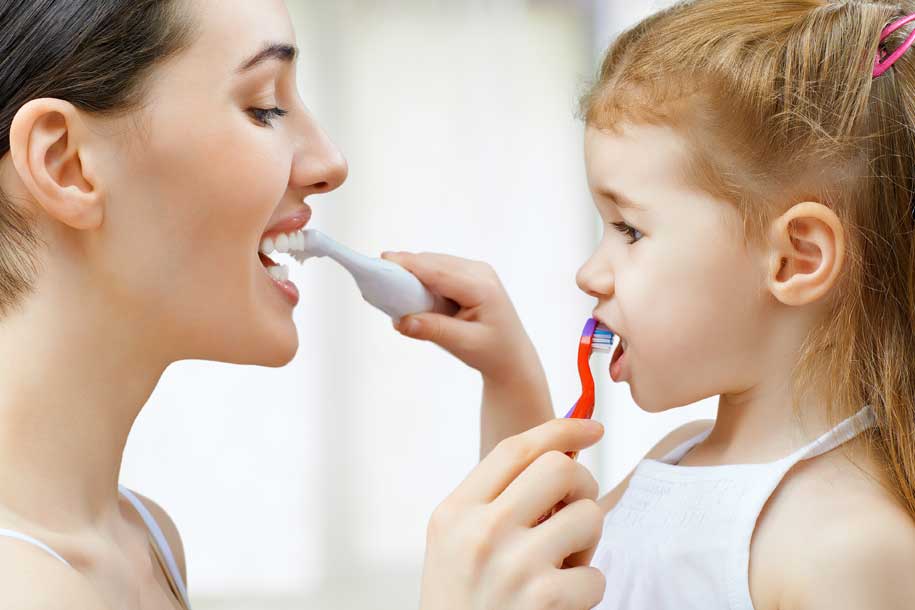Adults have a lot of problems trying to brush and floss their own teeth and as a result not only are cavities second only to colds as the most common disease, but 69% of men and women ages 35-44 have already lost one tooth. Oral health tends to deteriorate with age, as poor dental hygiene causes periodontal (gum) disease, resulting in 26% of Americans over 75 having lost all their teeth.
Clearly, the challenges are even more complicated when your children need to learn how to brush and floss, eventually on their own. It’s hard for young children to even hold a toothbrush and use it correctly, so it will take years of supervised training before most can do this well without parental help. Typically, around age six is when they have the motor skills to tie their own shoelaces and that should be a guide to when they have the dexterity to be trusted to brush their teeth well. It’s not about age, though, but capability.
And be sure you really know how brushing should be done before teaching them: using a soft-bristled brush, move from the gum line to the tip on both sides, taking about two minutes total twice a day. With our busy lives, it’s easy to fool oneself into thinking a quick once-over is enough to get all the food particles removed and keep them from attracting bacteria that will turn into sticky plaque. Not thoroughly done, this will result in your dentist and hygienist having to try to repair the damage.
The toothpaste for children and adults should include fluoride, of course, but kids need to start with a minimal amount so that they get into the habit of spitting it out, not swallowing it. This isn’t always easy for a child to do or to understand why it is important.
Flossing is, of course, even harder for them to do right. Adults often struggle to make sure they scrape both sides of each tooth, moving each part of the floss to a clean segment each time. Instead of trying to initially teach a child how to lightly wrap the string around the fingers or tying it into a circle, it’s generally easier to start with a pre-threaded flosser or floss holder. You probably need to do this for them initially and it should be started when they get their first two teeth that touch each other, usually about 2-3 years.
Ultimately, each child has to understand they need to brush and floss if you are not around, perhaps when a babysitter is there, and not to sneak snacks afterwards. This lesson will almost inevitably be reinforced when they get their first cavity, of course.



